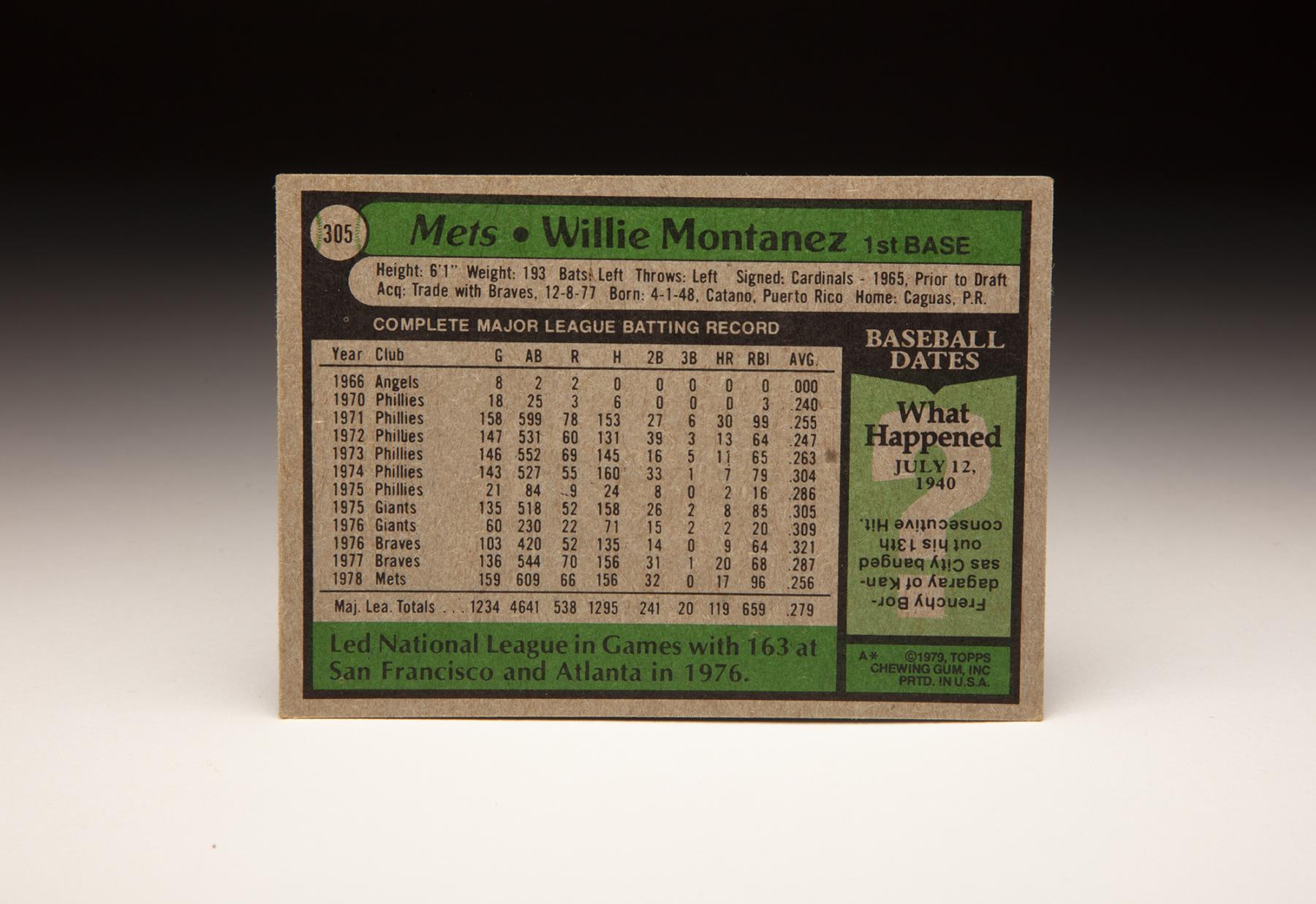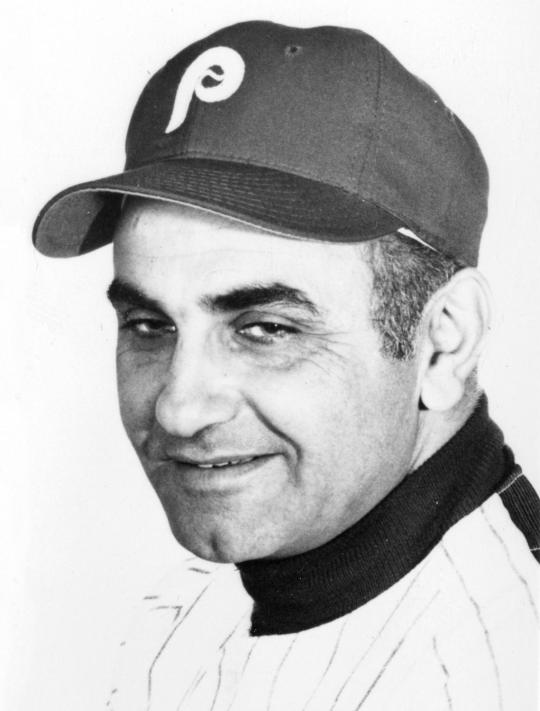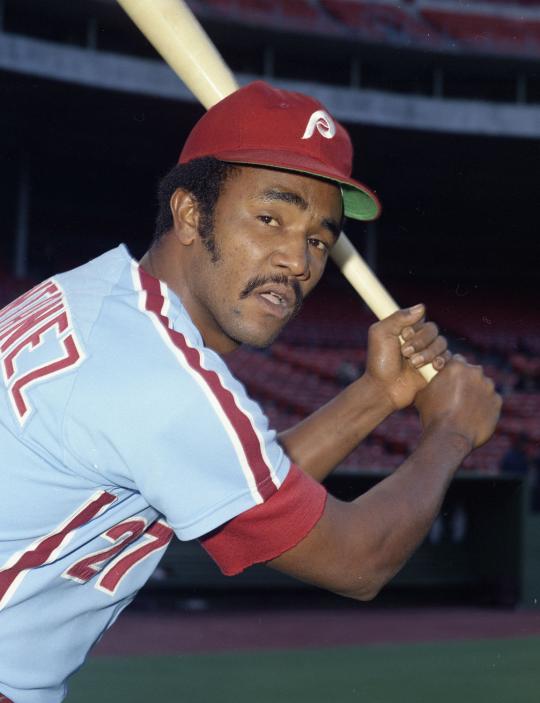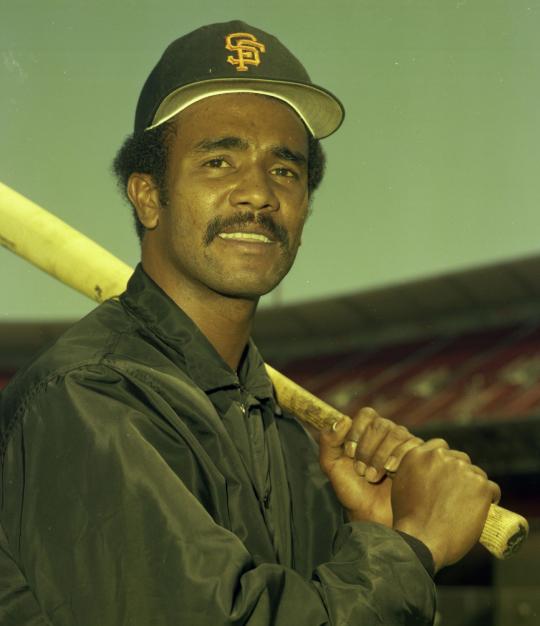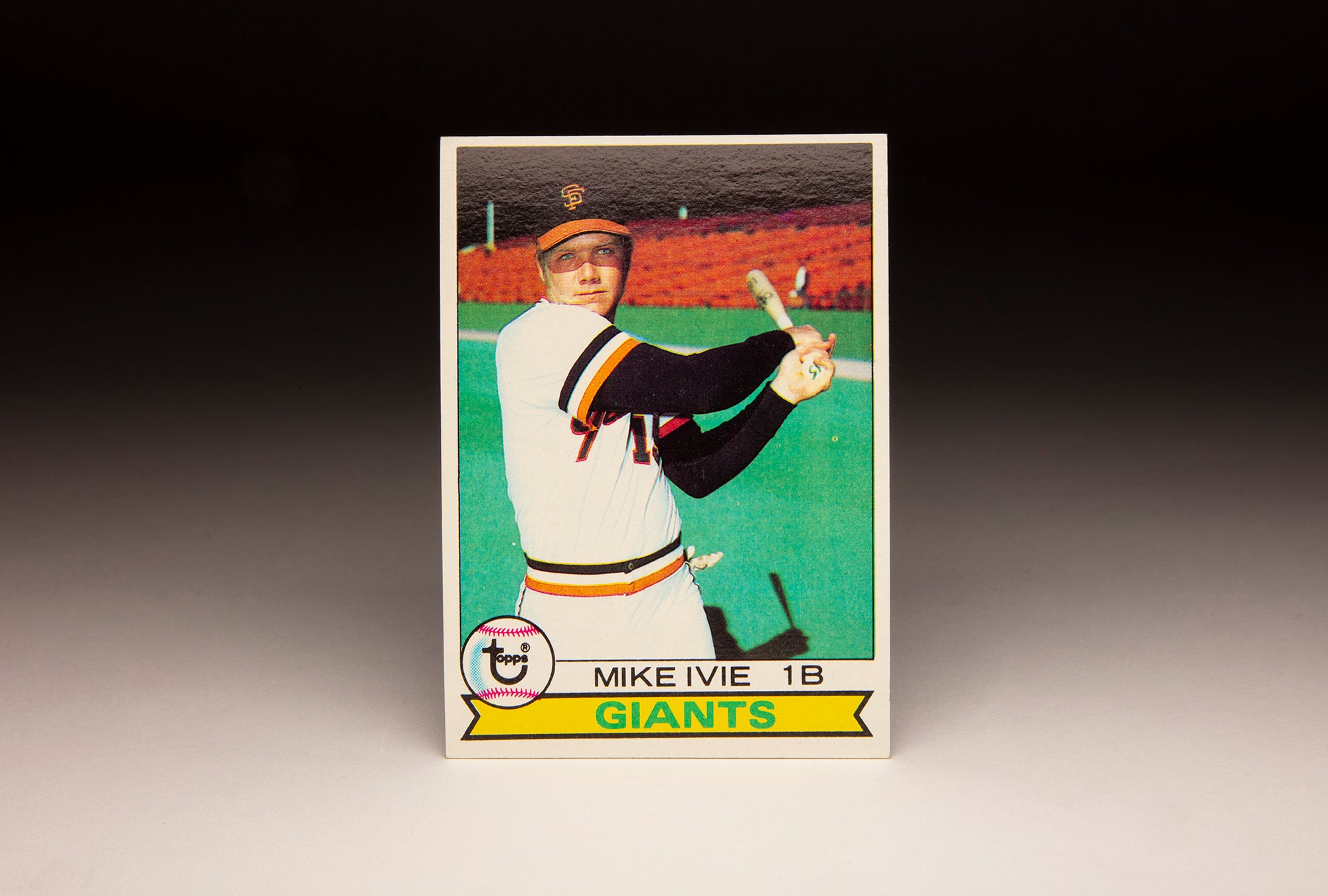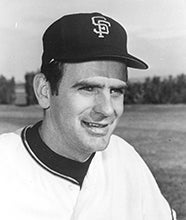- Home
- Our Stories
- #CardCorner: 1979 Topps Willie Montañez
#CardCorner: 1979 Topps Willie Montañez
He was a part of one of the most famous trades in the game’s history, but at the time Willie Montañez hadn’t played in the big leagues in almost four years.
Montañez, however, would make up for lost time – becoming one of most consistent hitters of the 1970s.
Be A Part of Something Greater
There are a few ways our supporters stay involved, from membership and mission support to golf and donor experiences. The greatest moments in baseball history can’t be preserved without your help. Join us today.
Montañez played for nine teams in his 14-year big league odyssey – appearing for only one club, the Phillies, for more than two seasons. But in that span he topped the .300 batting mark three times, hit 30 home runs in a season and was traded seven times in as many years as teams coveted his contact-first approach at the plate.
Born Guillermo Montañez on April 1, 1948, in Catano, Puerto Rico, the lefty swinging Montañez signed with the St. Louis Cardinals when he was 16 years old. He played 32 games in 1965 with the Cardinals’ Florida Rookie League team, hitting .235 with no extra base hits in 81 at-bats.
The Angels, however, saw the future and selected Montañez in the Rule 5 Draft, meaning he would have to be kept on the big league roster the entire season. Montañez was tabbed to start the Angels’ first intrasquad game of the 1966 Spring Training slate in Palm Springs, Calif. – drawing the nod at first base on a team that featured most of the Angels’ regulars for that season.
But after appearing in only eight of California’s first 16 games of the season – mostly as a pinch runner – Montañez was returned to the Cardinals on May 5. He would spend the rest of the 1966 season as well as the next two years in Class A ball. He hit .375 in 14 games with Triple-A Tulsa in 1969, but missed the remainder of the season after suffering a fractured knee and torn ankle ligaments.
On Oct. 7, 1969, the Cardinals and Phillies pulled off a blockbuster deal – one that initially did not include Montañez. St. Louis sent Curt Flood, Tim McCarver, Byron Browne and Joe Hoerner to the Phillies in exchange for Dick Allen, Jerry Johnson and Cookie Rojas. But Flood refused to report – putting in motion legal action testing the Reserve Clause that would eventually wind up with the United States Supreme Court.
Meanwhile – to complete the deal – the Cardinals offered the Phillies a list of players they could choose from to take the place of Flood. On April 8, 1970, the Phillies took Montañez.
“I was really surprised when they told me I was going to the Phillies,” Montañez told the Philadelphia Inquirer. “It was kind of hard, too. They told me on the last day of Spring Training.
“I’m just happy to be here now and just want a chance to play.”
Now 22, Montañez was sent to the Eugene Emeralds of the Pacific Coast League, where he hit .276 with 16 homers and 80 RBI in 119 games. The Phillies called him up to the big leagues in September, and Montañez recorded six hits in 25 at-bats.
In Spring Training of 1971, the Phillies tried Montañez in center field and he impressed the Philadelphia management team throughout March. Despite a glut of first basemen and outfielders on the squad, Montañez made the team and was the Phillies’ Opening Day center fielder. By mid-May, he was hitting .324 and had become a fan favorite.
“I’ve been glowing over this kid all spring,” Phillies manager Frank Lucchesi told the News Journal in Wilmington, Del. “I didn’t want to make a big thing about it because of the pressure I might put on him.”
Montañez cooled of over the summer but still finished with a .255 batting average, 30 home runs and 99 RBI in 158 games. He proved he could handle center field as well, helping Rick Wise preserve his no-hitter on June 23 against the Reds by hauling in a long liner off the bat of Pete Rose in the fourth inning that was likely the hardest hit ball off Wise that night.
Montañez finished second in the National League Rookie of the Year voting to the Braves’ Earl Williams – the only players who received votes. His 30 home runs remain a Phillies rookie record.
In the spring of 1972, Montañez asked the Phillies to double his salary to $30,000. After a short holdout, Montañez signed a new deal. He would lead the majors with 39 doubles that season, but hit just .247 with 13 homers and 64 RBI as the Phillies lost 97 games.
In 1973, new Phillies manager Danny Ozark moved Montañez to first base – and Montañez found the clubhouse more comfortable when the Phillies acquired Spanish-speaking players José Pagán and César Tovar.
“When you’re the only man who speaks Spanish you get lonely, unhappy,” Montañez told the News Journal. “The season seems like it’s 300 games long.”
But Montañez’s numbers did not improve, even after he was sent back to the outfield in July. He finished the season with a .265 batting average, 11 homers and 65 RBI.
After striking out 105, 108 and 80 times in his first three full seasons, however, Montañez shortened his batting stroke in 1974 and pushed his average to .304 with 33 doubles, seven homers and 79 RBI. Then on May 4, 1975, the Phillies parted with Montañez – sending him to the Giants in a one-for-one deal for Garry Maddox.
“It’s gonna be tough, especially leaving this club,” Montañez told the Philadelphia Daily News, virtually predicting the Phillies’ three straight NL East from 1976-78. It’s a good club, a good bunch of guys. They’re gonna win.”
Maddox, dubbed the “Secretary of Defense”, would win the first of eight straight Gold Glove Awards in center field for the Phillies in 1975. But Montañez was just as successful in San Francisco, hitting .305 in 135 games with the Giants and finishing the season with 10 homers and 101 RBI while settling in at first base. He did not like, however, the cold weather at Candlestick Park – and longed for a trade to a team closer to his home in Puerto Rico.
The Giants accommodated hit on June 13, 1976, shipping Montañez to the Braves in a six-player deal that sent Darrell Evans to San Francisco. In 163 games that season, Montañez hit .317 with 206 hits, 11 homers and 84 RBI – and garnered a handful of votes in the NL Most Valuable Player balloting.
The Braves signed Montañez to a three-year deal worth just shy of $1 million, but after just one season – where he hit .287 with 20 homers while being named to his first All-Star Game – Montañez was traded to the Mets in a complicated four-team deal on Dec. 8, 1977.
Montañez hit 17 homers and drove in 96 runs with the Mets in 1978, spent the 1979 season – in which he hit 13 homers and recorded 71 RBI – with the Mets and Rangers (following an Aug. 12 trade) and then found himself in San Diego in 1980 after another deal: One that sent Gaylord Perry to the Rangers on Feb. 15, 1980.
Montañez hit .274 with six homers and 64 RBI in 128 games for the Padres before a stretch drive trade sent him to the Expos in exchange for future star Tony Phillips. After becoming a free agent following the season, Montañez re-signed with the Expos but played in only 26 games before being dealt to Pittsburgh on Aug. 20, 1981, in exchange for John Milner – a player who was also involved in the four-team deal featuring Montañez following the 1977 season.
After stints with the Pirates and Phillies in 1982 – mostly as a pinch-hitter – Montañez’s career came to an end.
He finished with a.275 batting average, 139 home runs, 279 doubles and 1,604 hits in 1,632 games. Missing out on the Phillies’ late 1970s division-winning teams by just one year, Montañez never appeared in a postseason game.
Among players whose majority of seasons came during the divisional play era, only 12 players have ever appeared in more big league games without a postseason appearance. It was another footnote in a career full of them, but Montañez was much more than that.
A pro’s pro who was included in deals involving 30 different players, Guillermo Montañez had himself a career.
Craig Muder is the director of communications for the National Baseball Hall of Fame and Museum


